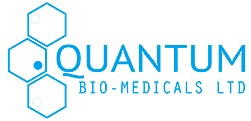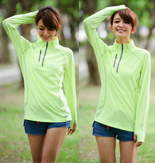Disclaimer:
This page is not intent for commercial use; all information on this individual page (frame) is direct extraction from academic works to describe the pathology of individual prognosis. The intention of this page is to raise awareness to the general public for the implicated scientific findings.
2. Potential Treatments
a. Acne Vulgaris
Currently, the management of Acne Vulgaris separate into basic treatment (benzoyl peroxide, retinoid, antibiotic) , systemic treatment (oral contraceptives, spironolactone, cyproterone acetate, flutamide) and physical treatments (lesion removal and photo therapy). [1]
As for phototherapy, according to a study compiled by the Imperial College of Science in London, “…In our study the mean improvement was 45% (95% confidence interval 32±59) in comedones and 63% (95% confidence interval 52±74) in inflammatory lesions using a cumulative blue light dose of 320J/cm2….”. [2]
b. Eczema
According to the “American Academy of Allergy, Asthma and Immunology and the European Academy of Allergology and Clinical Immunology”, typical treatments for Atopic Dermatitis are in the following steps:
Figure 1: Stepwise management of patients with atopic dermatitis (AD). TCS, topical corticosteroids; TCI, topical calcineurin inhibitors; CyA, cyclosporine A. *Over the age of 2 years. [3]

Majority of these management methods relies on the use of steroid based anti-inflammatory TSC/TCI to relief the patient with symptoms and the usage of UV as systemic system. Again, due to potential side effects of these treatments, a “perfect solution” is yet to be raised.
As stated in the previous page, MRSA played a crucial role in the development of Atopic Dermatitis (Eczema). In a recent study compiled by the University of Strathclyde (U.K.), it is found that visible light at 405nm is extremely effective in inactivating Gram-positive bacteria, including MRSA.[4] This is a very promising area in the science of photo-therapy for Atopic Dermatitis (Eczema). Furthermore, a clinical experiment compiled by the Department of Dermatology by the Johannes Gutenberg University (Germany) use 400nm – 450 nm light to treat 36 patients with a success “…The EASI score was improved by 41% and 54% after 3 and 6 months…”.[4]
c. LED, Possible Phototherapeutic Solutions?
Previous researches have shown that both Acne Vulgaris and Atopic Dermatitis (Eczema) can be potentially treated with phototherapy around 400nm region. Currently, there are many LED products which can emit light at the 400nm region range, however, there are no FDA approved relevant equipment has been marketed*.
The reason is that 400nm region light is dangerously near the UV region (399.99nm) and stability of such technology remains questionable. This instability can be contributed by:
- LED is the use of semi-conductors, in particular Indium Gallium blend compounds[6], to achieve quantum wells and emitting light.
- LED is an efficient light source; however, it is prone to decay and environmentally variable problems. In research, LED performance temperatures can cause output wavelength to vary[7], hence should not be used for narrow bandwidth photonic treatments. In another research, LED wavelength shift is studied against the electrical mA variance; the study shows that wavelength shifts can be as high as 10nm[8] (which is substantial, especially in the case of near UV phototherapy to treat skin diseases), again, it shows that LED may not be a reliable phototherapy source.
- By blending using Indium Gallium based compounds with electricity, spinodal decomposition, compositional pulling effect and surface segregation effect will occur. These effects can contribute up to 20%[9] of decomposition on Indium-Gallium blend crystal, which in turn, de-stable the quantum wells and lose ability to emit specified wavelengths.
c. Phototherapeutic Garment, can it ensure UV filtering even after numerous washes?
Although the filtering effects of the coating material may periodically deteriorate which raises the question of ability to protect the patient from UV rays. Despite the shifting of filtering effects of lights with usage deterioration, it is proven by third party certificating test that even after 40 washes, phototherapeutic garment UPF Value is at least 270 (which generally is considered to be UV proof).
*May vary by region
[1] Rathi, S., 2011. Acne Vulgaris Treatment : The Current Scenario: Indian Journal of Dermatology. [PDF] Available at:<http://www.ncbi.nlm.nih.gov/pmc/articles/PMC3088940/> [Accessed 20-01-2013]
[2] Papageorgiou, P., Katsambas, A., Chu, A., 2000. Phototherapy with blue (415 nm) and red (660 nm) light in the treatment of acne vulgaris: British Journal of Dermatology. [PDF] Available at:< http://www.ncbi.nlm.nih.gov/pubmed/10809858> [Accessed 20-01-2013]
[3] Akdis, C.A., Akdis, M., Beiber, T., Boguniewicz, M., Eigenmann, P., Hamid, Q., Kapp, A., Leung, D.Y.M., Lipozencic, J., Luger, T.A., Muraro, A., Novak, N., Platt-Mills, T.A.E., Rosenwasser, L., Scheynius, A., Simons, F.E.R., Spergel, J., Turjanmaa, K., Wahn, U., Weidinger, W., Werfel, T., Zuberbier, T., 2006. Diagnosis and treatment of atopic dermatitis in children and adults: European Academy of Allergology and Clinical Immunology/American Academy of Allergy, Asthma and Immunology/PRACTALL Consensus Report. American Academy of Allergy, Asthma and Immunology and the European Academy of Allergology and Clinical Immunology. [PDF] Available at: <http://onlinelibrary.wiley.com/doi/10.1111/j.1398-9995.2006.01153.x/pdf> [Accessed 24-12-2012]
[4] Anderson, J., Macgregor, S.J., Maclean M., Woosley, A.G., 2008. Inactivation of Gram-Positive Bacteria. University of Strathclyde. [Patent Application] Available at: <http://www.google.com/patents/EP1924323A1?cl=en >[Accessed 27-12-2012]
[5] Becker, D., Langer, E., Seemann, M., Seemann, G., Fell, I., Saloga, J., Grabbe, S., Stebut, E.V., 2011. Clinical Efficacy of Blue Light Full Body Irradiation as Treatment Option for Severe Atopic Dermatitis. Department of Dermatology, University Medicine, Johannes Gutenberg University, Mainz, Germany. [PDF] Available at: < http://www.ncbi.nlm.nih.gov/pmc/articles/PMC3110790/pdf/pone.0020566.pdf> [Accessed 26-12-2012]
[6] Light-emitting diode: Wikipedia. [Website] Available at:< http://en.wikipedia.org/wiki/Light-emitting_diode > [Accessed 26-12-2012]
[7] Narendran, N., Gu, Y., Freyssinier, J.P., Deng, L., 2004. Solid State Lighting: Failure Analysis of White LEDs: Journal of Cystal Growth.[PDF]Available at:<http://www.streetlightingresearch.net/programs/solidstate/pdf/narendran2004_jcrystalgrowth.pdf> [Accessed 26-12-2012]
[8] Yu, S.F., Chang, S.J., Chang S.P., 2012. Investigation of Efficiency Droop for InGaN-based LEDs with Carrier Localization State and Polarization Effect: Institute of Microelectronics & Department of Electrical Engineering, National Cheng Kung University. [PDF] Available at:< http://gaasmantech.com/Digests/2012/papers/12.5.103.pdf>[Accessed 26-12-2012]
[9] Kim, H.J., Shin, Y., Kwon, S.Y., Kim, H.J., Choi, S., Hong, S., Kim, C.S., Yoon, J.W., Cheong, H., Yoon, E., 2008. Compositional analysis of In-rich InGaN layers grown on GaN templates by metalorganic chemical vapor deposition: Journal of Crystal Growth. [PDF] Available at:< http://hompi.sogang.ac.kr/opto/pdf_files/122_Journal%20of%20crystal%20growth_310_3004.pdf>[Accessed 26-12-2012]









Follow us